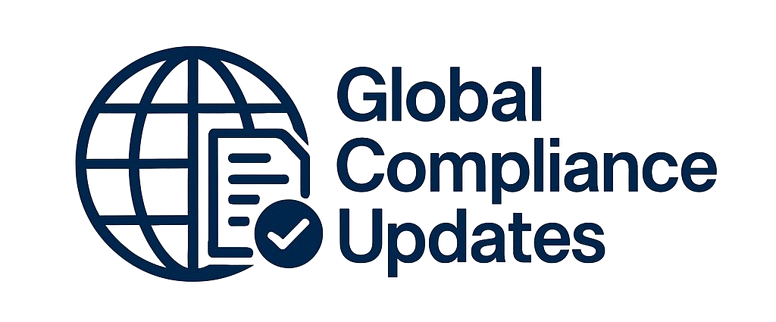This webinar will help you understand in detail Computer System Validation (CSV) and how to apply the System Development Life Cycle (SDLC) Methodology when validating computer systems subject to FDA regulations. This is critical in order to develop the appropriate validation strategy and achieve the thoroughness required to prove that a system does what it purports to do. It also ensures that a system is maintained in a validated state throughout its entire life cycle, from conception through retirement.
We will discuss the phases within the SDLC, and how these form the basis for any CSV project. The importance of the sequence of steps will also be covered.
WHY SHOULD YOU ATTEND?
- The attendees of this Live Webinar will learn:
- How to reduce the time and labor involved in a computer system validation effort by adequately planning your project?
- How to leverage past validation efforts to optimize results?
- How to ensure your team members are adequately trained to implement and maintain an FDA-regulated computer system in order to manage a successful outcome?
- How efficient and effective testing can ensure that all deficiencies are captured before a system is put into production, allowing for a smooth go-live without delay?
- How to keep on top of changes to the system over time to ensure it is maintained in a validated state and does not require a complete revalidation due to neglect?
- How to manage organizational change at the outset of a new system implementation project in order to avoid sabotage and other attempts to resist new ways of conducting business
- How to evaluate business processes to ensure that these are optimized as the system is being developed and/or configured to enable improvements in efficiency and effectiveness of operations that will save money in the long run?
- How to document all validation work in order to ensure that revisits to the deliverables during subsequent system changes are efficient and do not require extra labor to dig through poorly documented information?
- About potential pitfalls to the validation process through real industry examples
- How to avoid and/or mitigate potential pitfalls during the validation process?
AREA COVERED
- Computer System Validation (CSV)
- System Development Life Cycle (SDLC) methodology
- Validation planning
- Risk assessment
- GAMP 5 system categorization
- Functional requirements
- IQ, OQ, and PQ testing
- User acceptance
- Maintaining a System in a Validated State
- Policies and procedures
- Training
- Organizational readiness
- Documentation
- Q&A
LEARNING OBJECTIVES
- Discuss the best practices necessary to ensure all systems are validated appropriately
- Learn how to develop the appropriate computer validation strategy, to ensure a good balance of cost vs. risk
- Understand how to effectively document the process of computer system validation, and maintain current information about the various systems in your organization and how they are maintained in a validated state
- Learn how to gain information about trends invalidation, as the industry progresses and new best practices emerge
- Understand some of the key "pitfalls" to avoid when applying the SDLC methodology
WHO WILL BENEFIT?
- Information Technology (IT) analysts
- IT developers
- IT support staff
- QC/QA managers and analysts
- Clinical data managers and scientists
- Compliance managers and auditors
- Lab managers and analysts
- Computer system validation specialists
- GMP training specialists
- Business stakeholders using computer systems regulated by FDA
- Regulatory Affairs personnel
- Consultants in the Life Sciences and Tobacco Industries
- Interns working at the companies listed above
- College students attending schools and studying computer system validation, regulatory affairs/matters (related to FDA) or any other discipline that involves adherence to FDA regulatory requirements
- The attendees of this Live Webinar will learn:
- How to reduce the time and labor involved in a computer system validation effort by adequately planning your project?
- How to leverage past validation efforts to optimize results?
- How to ensure your team members are adequately trained to implement and maintain an FDA-regulated computer system in order to manage a successful outcome?
- How efficient and effective testing can ensure that all deficiencies are captured before a system is put into production, allowing for a smooth go-live without delay?
- How to keep on top of changes to the system over time to ensure it is maintained in a validated state and does not require a complete revalidation due to neglect?
- How to manage organizational change at the outset of a new system implementation project in order to avoid sabotage and other attempts to resist new ways of conducting business
- How to evaluate business processes to ensure that these are optimized as the system is being developed and/or configured to enable improvements in efficiency and effectiveness of operations that will save money in the long run?
- How to document all validation work in order to ensure that revisits to the deliverables during subsequent system changes are efficient and do not require extra labor to dig through poorly documented information?
- About potential pitfalls to the validation process through real industry examples
- How to avoid and/or mitigate potential pitfalls during the validation process?
- Computer System Validation (CSV)
- System Development Life Cycle (SDLC) methodology
- Validation planning
- Risk assessment
- GAMP 5 system categorization
- Functional requirements
- IQ, OQ, and PQ testing
- User acceptance
- Maintaining a System in a Validated State
- Policies and procedures
- Training
- Organizational readiness
- Documentation
- Q&A
- Discuss the best practices necessary to ensure all systems are validated appropriately
- Learn how to develop the appropriate computer validation strategy, to ensure a good balance of cost vs. risk
- Understand how to effectively document the process of computer system validation, and maintain current information about the various systems in your organization and how they are maintained in a validated state
- Learn how to gain information about trends invalidation, as the industry progresses and new best practices emerge
- Understand some of the key "pitfalls" to avoid when applying the SDLC methodology
- Information Technology (IT) analysts
- IT developers
- IT support staff
- QC/QA managers and analysts
- Clinical data managers and scientists
- Compliance managers and auditors
- Lab managers and analysts
- Computer system validation specialists
- GMP training specialists
- Business stakeholders using computer systems regulated by FDA
- Regulatory Affairs personnel
- Consultants in the Life Sciences and Tobacco Industries
- Interns working at the companies listed above
- College students attending schools and studying computer system validation, regulatory affairs/matters (related to FDA) or any other discipline that involves adherence to FDA regulatory requirements
Speaker Profile
 Carolyn Troiano
Carolyn Troiano
Carolyn Troiano has more than 35 years of experience in computer system validation in the tobacco, pharmaceutical, medical device and other FDA-regulated industries. She has worked directly, or on a consulting basis, for many of the larger pharmaceutical and tobacco companies in the US and Europe. She is currently building an FDA computer system validation compliance strategy at a vapor company. Carolyn has participated in industry conferences, and is currently active in the Association of Information Technology Professionals (AITP), and Project Management Institute (PMI) chapters in the Richmond, VA area. Carolyn also volunteers for the PMI’s Educational Fund as a …
Upcoming Webinars

ChatGPT and Project Management: Leveraging AI for Project M…

Workplace Investigations 101: How to Conduct your Investiga…

Project Management for administrative professionals

The Monte Carlo Simulations in Excel for Risky Investments

Onboarding is NOT Orientation - How to Improve the New Empl…

Dealing With Difficult People: At Work & In Life

Transform Data into Insights: A Beginners Guide to Excel Pi…

Construction Lending And Real Credit Administration: Evalua…

Understanding Accounting for non - Accounting professionals

Harassment, Bullying, Gossip, Confrontational and Disruptiv…

New Form 1099 Reporting Requirements: 2025 Compliance Update

Human Error Reduction Techniques for Floor Supervisors

HR Metrics and Analytics 2025 - Update on Strategic Plannin…

Treating Employees Like Adults: Discipline versus Empowerme…

7 Ways To Beat Burnout: Without Quitting Your Job


How to Write Procedures to Avoid Human Errors

Handbook Overhaul 2026: Compliance, OBBB Act & Beyond

FDA Proposes Framework to Advance Credibility of AI Models

Ethical Terminations: Navigating Employee Exits with Legal …

Understanding EBITDA – Definition, Formula & Calculation

Project Management for Non-Project Managers - Scheduling yo…

4-Hour Virtual Seminar on Hidden Secrets of Selling & Marke…

Validation Statistics for Non-Statisticians

Data Integrity and Privacy: Compliance with 21 CFR Part 11,…


The Alphabet Soup: When the FMLA, ADA, COBRA, and Workers' …

Talent Management: How to Leverage AI and ChatGPT Tools for…


Offboarding with Care: Conducting Legal & Ethical Employee …

2-Hour Virtual Seminar on How to Conduct an Internal Harass…

Payments Fraud Detect & Prevent Check, ACH and P-Card Schem…

Managing Toxic & Other Employees Who have Attitude Issues



Reduce Stress in the Workplace: Effective Ways to Handle Co…





Excel - Pivot Tables - The Key To Modern Data Analysis and …
